MDRS Crew 188 Journalist Report 31/01/2018
Human Factors: From Habitability to Humanity
SOL-3 Author’s name: Dr. Sarah Jane Pell
Yesterday felt different. It began after the first six hours of uninterrupted sleep in nearly one Earth week. We convened at 8am for breakfast with a newfound clarity and resolve to self-organize, and prioritize the reasons that we came to MDRS. We structured the day to take steps towards realizing the potentials for our individual and collaborative research objectives. I couldn’t claim that we have found our groove, or fallen into a routine, but today there was a noticeable shift in momentum and perspective from the inner to the outer reaches of the MRSD experience, and back again.
In the morning, Dr. Ryan Kobrick, Tatsunari Tomiyama and Zac Trolley went on EVA-3 to survey the terrain: to geo-locate waypoints and calibrate the GPS with the existing Map coordinates, and scout for suitable research sites. Julia De Mariners and Dr. Sarah Jane Pell set to work on advancing Sci-Art collaboration for the Super Blue Moon Total Eclipse this evening, and Renee Garifi commanded the Hab Comms.
After lunch, the team gathered in the Habitat communal space for a Human Factors research activity designed by Crew HSO Tatsunari Tomiyama. The exercise included 6 open questions for the group relating our MDRS experience of: Communication, Water, Hygiene, WiFi, Crew Roles, and Research. After discussion we provided a subjective score between: 1 – 5 (negative – positive). Our responses were recorded in an open-format discussion and documented via video. The exercise was incredibly valuable and insightful; opening us up to a collective yet nuanced personal experience of the simulation thus far. Well, that is, the exercise helped facilitate learning and a bonding experience for the participants, but the principal investigator did not participate or share with us his responses to these topics. He felt that he must place himself at a distance from the group. It struck me as an odd tension: playing the role of the ‘official observer’ and the HSO role of the analogue ‘astronaut crew’. Nonetheless, the reality of this dual-responsibility resonates with the anticipated demands of future Mars crews. I think back to Tomiyama’s choice of animal totem for life on Mars: the domestic cat, he said, leading to his crew call sign Tom Cat. We see him at meals times but we don’t get to know him through this deliberate displacement. It will be interesting to see how he maps how this affects the crew dynamics, and when he chooses to step in, and step out, of collective activities. We meet again next week, and at the end of the simulation to discuss the shift in our experience of these themes.
At the conclusion of the HSO activity, the crew leaped into action to workshop on the engineering challenge of supporting the artist-in-residence and astronomer’s hope to live stream the Total Lunar Eclipse. Trolley, Kobrick, and De Marinares worked with Pell on finding a suitable location to track the event, a systems installation supporting the camera and the telescope array, creative configuration and Kobrick, Garifi and De Marinares commenced liaison with the MDRS Director, Mission Control, Astronomy and IT support for the infrastructural help needed to execute on the grand idea. Once things were underway, De Marinares began scoping out her own research projects, and how they might be achieved, and balanced with her Green House responsibilities. Engineer Trolley commenced a complete evaluation and status report of all vital systems to bring clarity to the web of interdependency and make-shift, and Commander Kobrick problem-solved from one system to another, while making sure he could map out pathways to support his own research, noting he still had boxes to unpack, necessary for concurrent research demands to be met.
As the sun set, our collective energies shifted to reflect on the big picture: as the reality of the domestic demands from the system maintenance, and interruptions sheds light on the limited time available to us, and challenges arising from prior misconceptions and expectations of autonomy and agency, we chose to focus on what we are here to achieve, and how we may best serve the MDRS community with our commitment and contribution.
It was the perfect evening for a Total Lunar Eclipse. The Crew went to sleep early while the Artist-in-Residence stayed up until 4:40am to attempt a live stream of the phenomena in 4K Panorama Video. As the red halo began a partial eclipse, the crew emerged with cameras, telescopes, slippers and scarves to brace the cold and look to the elliptical glow. At once incredibly beautiful, and infinitely intriguing still. We went to sleep pondering over the view from Mars… would we see an Eclipse of Phobos and what would it be like? I imagine that it would conjure universal feelings that we would share with our Earthly ancestors.


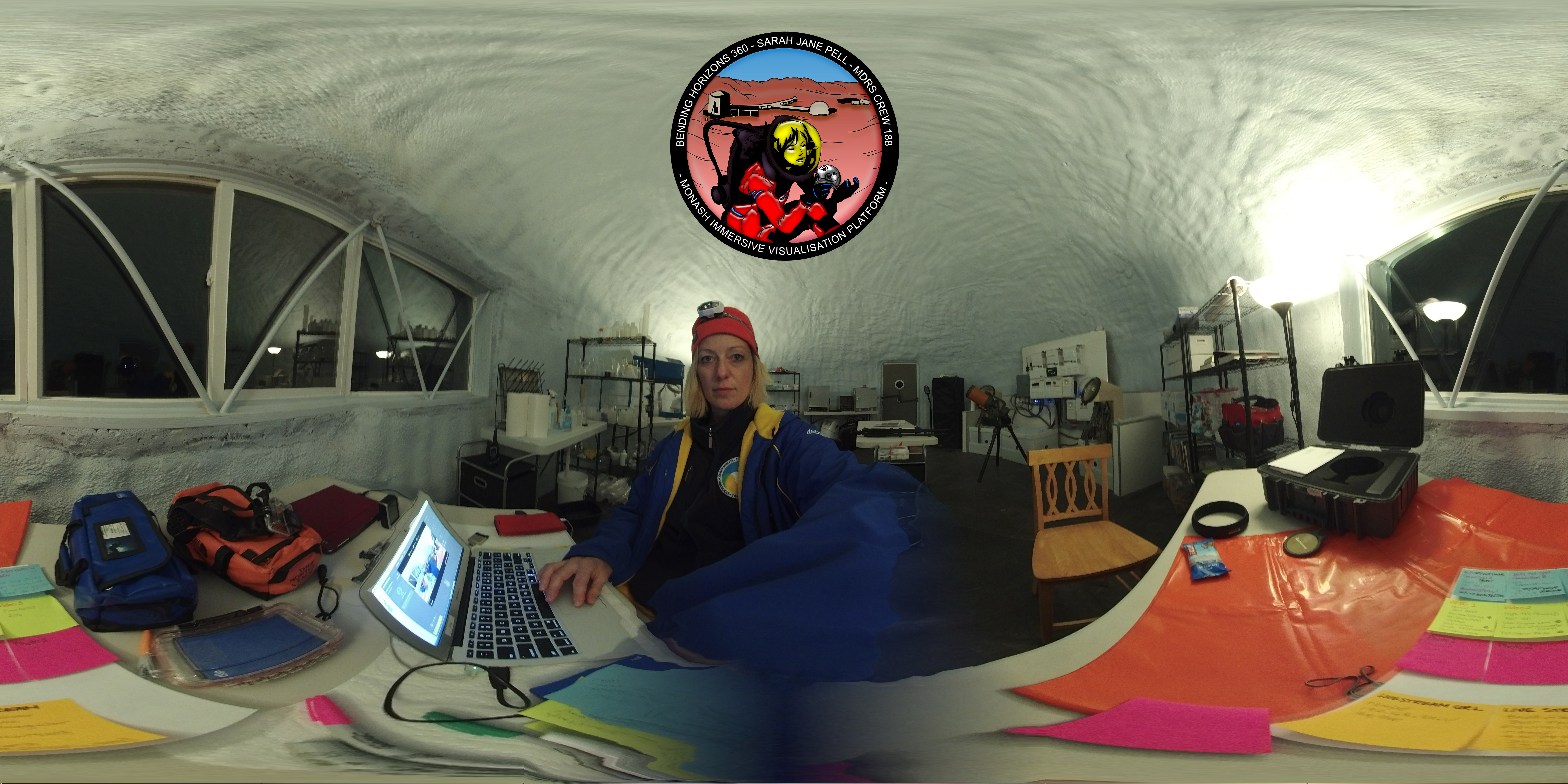

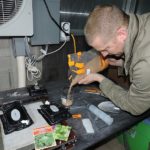
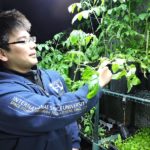
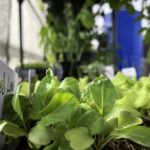
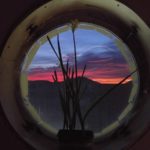
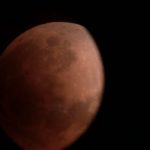
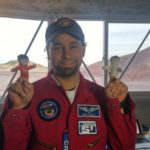
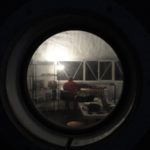
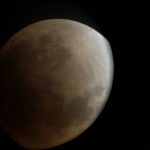
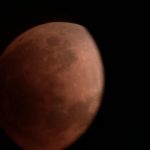
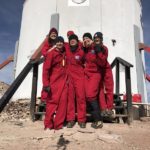
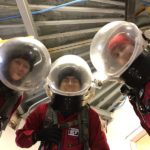
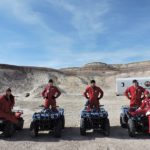
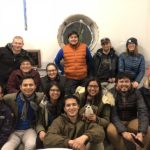


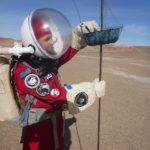

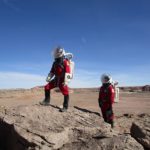
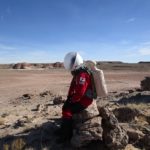
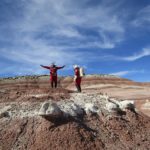
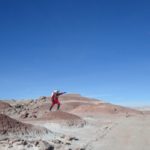
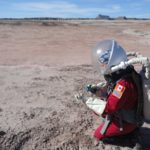
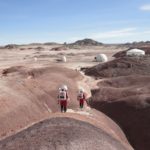
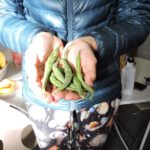
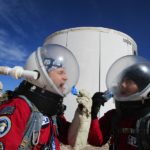
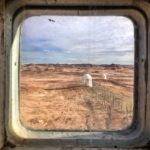
You must be logged in to post a comment.